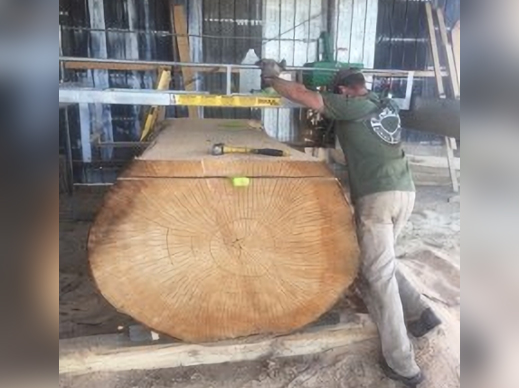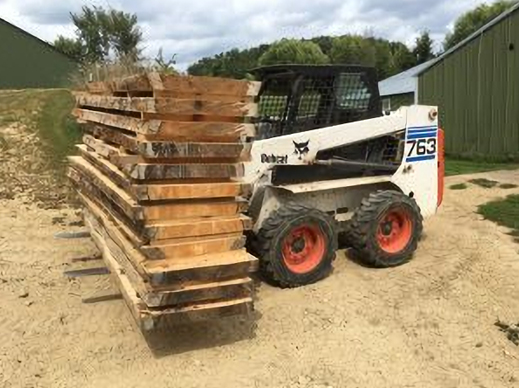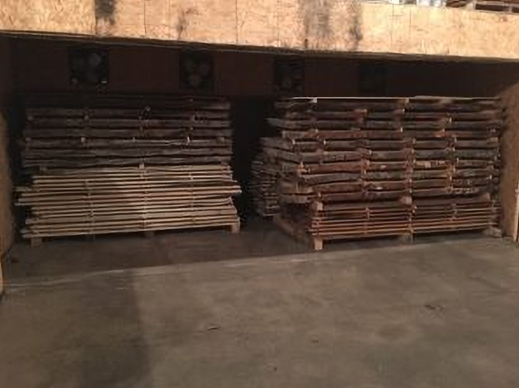From Urban Trees to Furniture
Our slabs start as fallen urban trees. These are trees that were removed from urban areas like city streets, backyards, parks, building lots, government property, and other similar areas. Because most urban trees have foreign objects and debris in them, they were previously destined for the burn pile. We believe in rescuing these fallen giants and repurposing them.

Once they arrive in the log yard, they are cut with a special sawmill called a slabber. The slabber has the ability to saw logs that are 60” in diameter and 20’ long. Once cut, the slabs are stacked with strips of wood (called stickers) between the slabs to allow for airflow so they can dry. Air drying typically takes one or two years, depending on the species.

Once the slabs have air dried to the desired moisture content, they are placed in the dry kiln. The dry kiln is a special chamber where the temperature and humidity are closely controlled to lower the moisture content of wood inside. Slabs typically remain in the 120 degree kiln for 2-4 weeks. The length of time required to dry depends on the species of wood and the initial moisture content.

Once the slabs are dry and out of the kiln, they can finally be turned into a piece of furniture. Because all slabs warp during drying, they must first be flattened. This is done either on a CNC router or a sawmill equipped with a special planer head. Once flattened, construction can begin. Due to the nature of the material, slab furniture is very labor intensive. A small dining table takes roughly 40 hours to complete. Larger tables can even exceed 100 hours depending on the desired finish.
To buy your own very own slab or custom piece of live edge furniture, contact us.